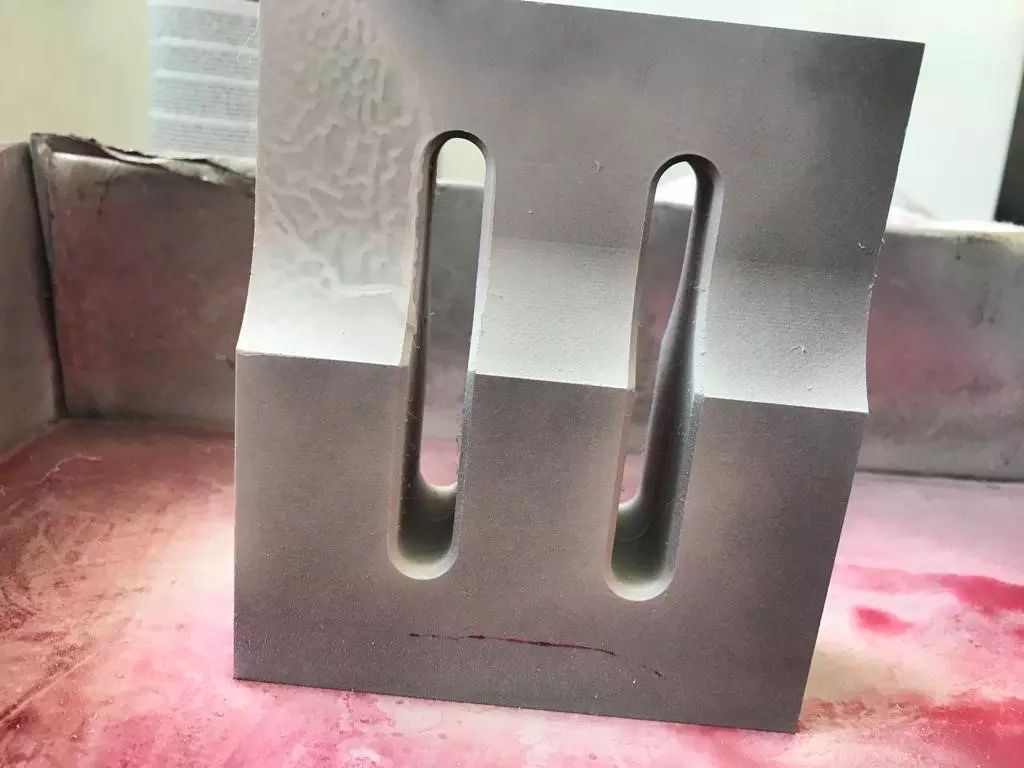FAQ: Every day I need to retune the ultrasonic generator and after a short time the tuning point is no longer good again. Then I repeat the horn tuning procedure. Initially the horn frequency was near 20.00 kHz, but after few days of testing and retuning, the frequency decreased to 19.50 kHz. At the end, it was impossible to retune it. What can be the cause of this problem? Too much pressure? Material composition? What is the solution? Mr. D.S.

Sonotrode cracked at the stud level with confirmation by liquid penetrant inspection.
The issue and evolution described is typical of crack nucleation and growth as a result of material fatigue. The fatigue process is caused by stress concentration and accelerated by temperature, what may be favored by poor design and insufficient cooling. Straight corners and scratches also act as stress concentrators. The alloy is also critical because the material should be fatigue-resistant and should not heat up because of ultrasonic vibration. The stud holes' bottom on the cracked horn shown in the figure is in the same level where the crack occurred (the crack is highlighted by dye penetrating test).
It is not possible to refurbish a cracked horn, so if that is the case, it must be replaced immediately to avoid damaging other parts or the generator. Do not wait for the crack to grow neither try to retune it. Annoyingly high pitch sound is typical of cracked horns, the sound is generated by the crack walls friction during vibration at high power.
Use only moderated torque to mount the ultrasonic stack. To couple the converter to the booster and the booster to the horn, 35 Nm is enough for 20 kHz equipment. To reinsert the horn stud, the torque is much lower, 2 Nm is enough. Too much torque contributes to stress increase and crack nucleation.
Learn more about tuning of ultrasonic horns and testing of acoustic stacks.
